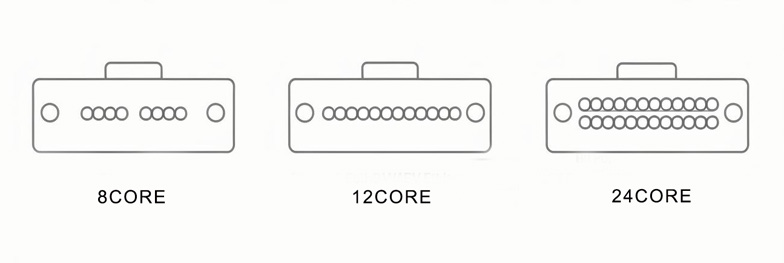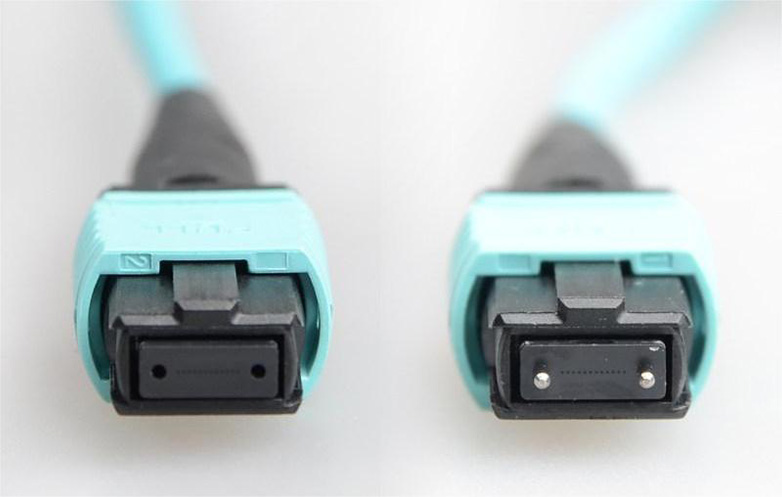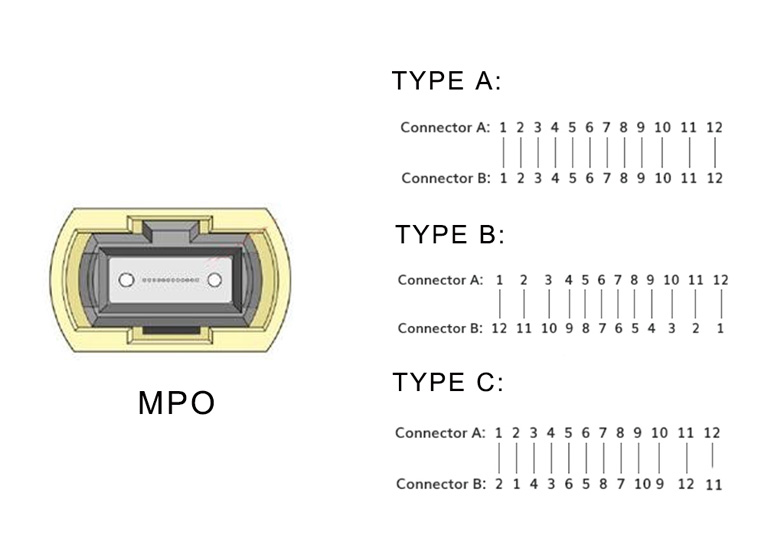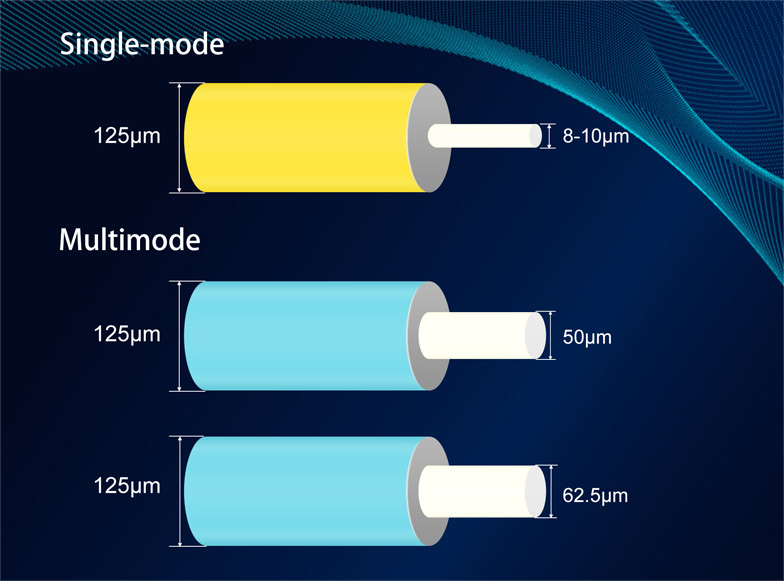The world of optical communication is very complex, and its connectivity is crucial. In this article, we will introduce MPO and MTP optical fibers, reveal their complexity, clarify the differences between the two, and provide personal insights on how to effectively use them in various applications for your reference.
MPO stands for Multi-fiber Push On. MPO fiber generally refers to the commonly used MPO fiber patch cord. This fiber patch cord is a connection line composed of MPO connectors and fiber cables. The connector of the MPO fiber patch cord is a type of multi-core fiber connector, which is adopted by the IEEE standard as one of the connector types for 40G/100G transmission. It is similar to LC/SC/FC and other fiber patch cords, the difference lies in the connector head and the number of fiber cores. The MPO connector head is more complex than LC/SC/FC. The MPO high-density fiber pre-connection system is currently mainly used in three major areas: applications in high-density environments in data centers, applications in fiber to the building, and connection applications within optical splitter, optical module and other optical transceiver equipment.
MTP stands for Multi-fiber Terminal Plug. MTP fiber is an upgraded version of MPO fiber, with an innovative design of high-performance MPO connectors. Compared to general MPO connectors, MTP fiber connectors have been enhanced in terms of performance and adaptability. MTP complies with all professional standards of MPO connectors, which means that upgrading existing MPO connectors to MTP connectors to obtain better performance is completely feasible. This type of connector, MTP, is registered by US Conec and is protected by patents. Currently, MPO fibers are still more common in the market, while MTP is rare.
Unlike conventional LC/SC/FC fibers, MPO/MTP fibers have a significant difference in the number of fiber cores. MPO/MTP connector components can accommodate 6 to 144 fibers, and the ones that are more commonly used in the market are 12-core and 24-core. According to the specifications, 12-core MPO/MTP fibers are arranged in a single row, while 24-core or more cores are arranged in multiple rows. They are generally used for the connection and transmission of 40G or 100G optical modules.

MPO/MTP fiber connectors are divided into two types: male and female. The male connector has two PINs, while the female connector does not have PINs. The connection between the MPO/MTP fiber connector and the optical module is precisely positioned through the PINs, and the two connectors that connect to each other must be one male and one female.

MPO/MTP can be divided into three types according to the corresponding arrangement of fiber cores: Type A is straight-through; Type B is staggered; Type C is pair staggered.

MPO/MTP fiber can support both single-mode and multi-mode fibers, but the specific mode depends on the application and the distance the signal needs to be transmitted.
Single-mode MPO/MTP fiber is designed for long-distance transmission. They use a single strand of glass fiber to transmit a single beam of light. The data transmission distance of single-mode MPO/MTP fiber can reach 100 kilometers.
Multi-mode MPO/MTP fiber is designed for short-distance data transmission. They use multiple paths (modes) to transmit light, which allows them to carry higher data rates than single-mode fibers. However, this also means that the signal will weaken as the distance increases. Multi-mode MTP/MPO fiber is usually used for short-distance data transmission, such as within a single building or data center.

Are MTP and MPO compatible?
Yes, MTP (Multi-fiber Termination Push-on) and MPO (Multi-fiber Push-on) connectors are typically compatible with each other.
Can MTP and MPO fiber cables be used for both single-mode and multi-mode applications?
Yes, MTP (Multi-fiber Termination Push-on) and MPO (Multi-fiber Push-on) fiber cables are versatile and can be used for both single-mode and multi-mode applications.
Should MTP or MPO fiber be used for high-density cabling systems?
For high-density cabling systems, MTP (Multi-fiber Termination Push-on) fiber is generally superior to MPO (Multi-fiber Push-on) fiber. The main reason is that MTP is a specific type of MPO connector that is designed with higher performance and density in mind.
What type of fiber does MPO/MTP array connectors use?
MPO (Multi-fiber Push-on) or MTP (Multi-fiber Termination Push-on) array connectors are typically used with MPO or MTP cables. These connectors are designed for multi-fiber cables, with the aim of connecting multiple fibers simultaneously in a single compact connector.

